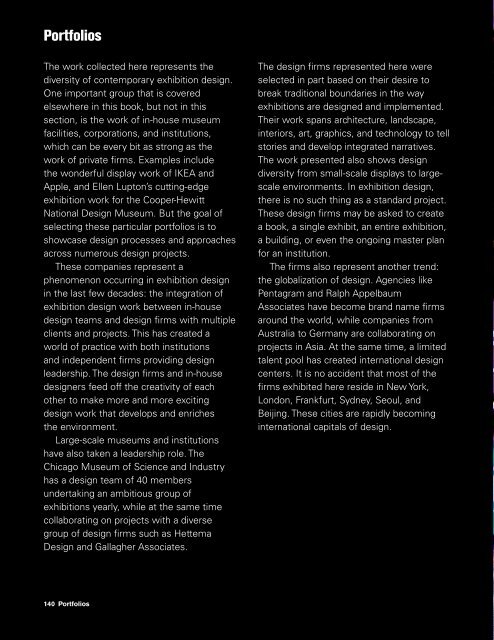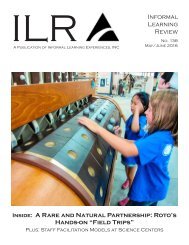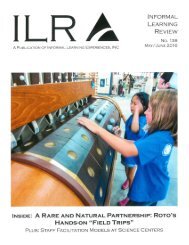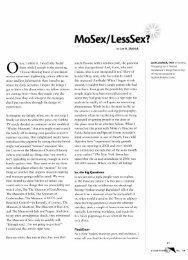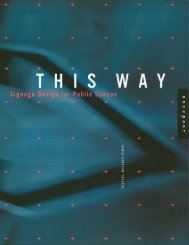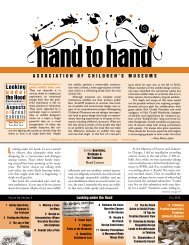070821 LHS_WIED.PDF
- No tags were found...
You also want an ePaper? Increase the reach of your titles
YUMPU automatically turns print PDFs into web optimized ePapers that Google loves.
Portfolios<br />
The work collected here represents the<br />
diversity of contemporary exhibition design.<br />
One important group that is covered<br />
elsewhere in this book, but not in this<br />
section, is the work of in-house museum<br />
facilities, corporations, and institutions,<br />
which can be every bit as strong as the<br />
work of private firms. Examples include<br />
the wonderful display work of IKEA and<br />
Apple, and Ellen Lupton’s cutting-edge<br />
exhibition work for the Cooper-Hewitt<br />
National Design Museum. But the goal of<br />
selecting these particular portfolios is to<br />
showcase design processes and approaches<br />
across numerous design projects.<br />
These companies represent a<br />
phenomenon occurring in exhibition design<br />
in the last few decades: the integration of<br />
exhibition design work between in-house<br />
design teams and design firms with multiple<br />
clients and projects. This has created a<br />
world of practice with both institutions<br />
and independent firms providing design<br />
leadership. The design firms and in-house<br />
designers feed off the creativity of each<br />
other to make more and more exciting<br />
design work that develops and enriches<br />
the environment.<br />
Large-scale museums and institutions<br />
have also taken a leadership role. The<br />
Chicago Museum of Science and Industry<br />
has a design team of 40 members<br />
undertaking an ambitious group of<br />
exhibitions yearly, while at the same time<br />
collaborating on projects with a diverse<br />
group of design firms such as Hettema<br />
Design and Gallagher Associates.<br />
The design firms represented here were<br />
selected in part based on their desire to<br />
break traditional boundaries in the way<br />
exhibitions are designed and implemented.<br />
Their work spans architecture, landscape,<br />
interiors, art, graphics, and technology to tell<br />
stories and develop integrated narratives.<br />
The work presented also shows design<br />
diversity from small-scale displays to largescale<br />
environments. In exhibition design,<br />
there is no such thing as a standard project.<br />
These design firms may be asked to create<br />
a book, a single exhibit, an entire exhibition,<br />
a building, or even the ongoing master plan<br />
for an institution.<br />
The firms also represent another trend:<br />
the globalization of design. Agencies like<br />
Pentagram and Ralph Appelbaum<br />
Associates have become brand name firms<br />
around the world, while companies from<br />
Australia to Germany are collaborating on<br />
projects in Asia. At the same time, a limited<br />
talent pool has created international design<br />
centers. It is no accident that most of the<br />
firms exhibited here reside in New York,<br />
London, Frankfurt, Sydney, Seoul, and<br />
Beijing. These cities are rapidly becoming<br />
international capitals of design.<br />
140 Portfolios


